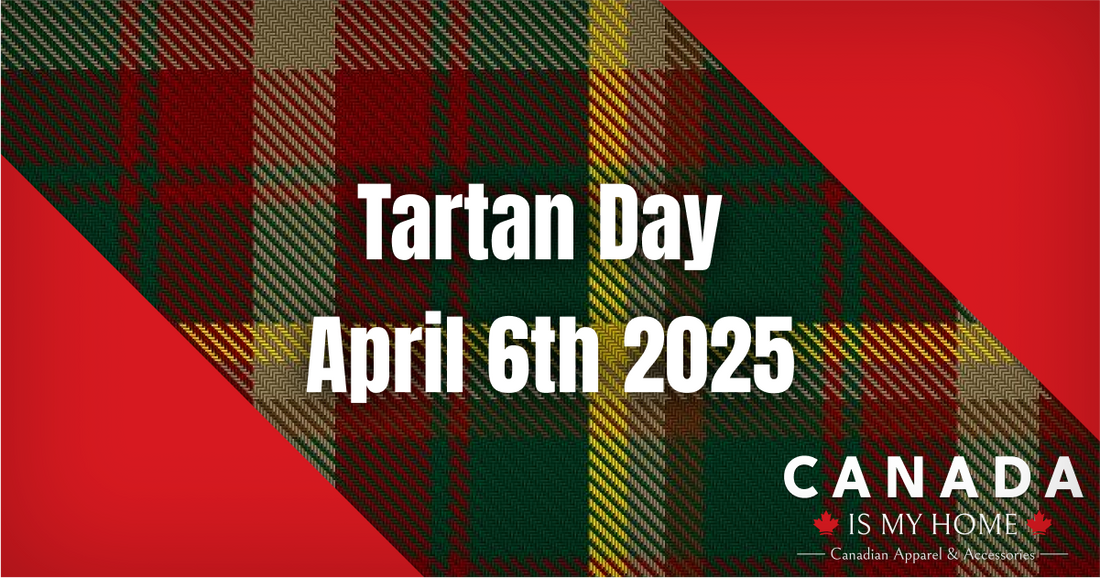
Tartan Day — Celebrating the Threads that Bind Canada
Welcome to an exploration of Tartan Day in Canada, observed on April 6, 2025. This day celebrates the rich Scottish heritage woven into the fabric of Canadian identity, particularly through the tradition of tartans. As a patriotic apparel store, "Canada is my Home," we’re excited to guide you through the significance of tartans in Canada, highlighting each province’s unique design.
Understanding Tartans: A Scottish Legacy
Tartans are distinctive patterned cloths, traditionally made from wool, known for their checkerboard designs. Originating in Scotland, they were historically associated with specific clans, each with its own unique pattern or "sett." These patterns evolved over centuries, becoming symbols of regional and familial identity. The colors often reflect natural dyes, with variations like Ancient (softer, mossy tones) and Modern (brighter contrasts) based on dyeing techniques before and after 1860.
In Canada, tartans have been adopted to represent not just clans but also provinces, territories, and the nation itself, reflecting the significant Scottish immigration, especially to the Maritimes and beyond. This adoption began with Scottish regiments serving in Canada before Confederation and continued with settlers, embedding tartans deeply into Canadian culture.
The Birth and Growth of Tartan Day in Canada
Tartan Day’s origins trace back to a meeting of the Federation of Scottish Clans in Nova Scotia on March 9, 1986, where members Bill Crowell and Jean MacKeracher-Watson proposed establishing a day to promote Scottish heritage through wearing tartans in everyday settings like work, play, or worship. The first proclamation came from Nova Scotia in April 1987, marking April 6, the anniversary of the 1320 Declaration of Arbroath, Scotland’s declaration of independence. This date was chosen for its historical significance, resonating with Canadian values of freedom and identity.
The celebration spread across Canada, with Ontario following in 1991, and by 2003, every province, including Quebec, had recognized Tartan Day. In 2010, the federal government officially declared April 6 as Tartan Day, acknowledging the contributions of over four million Canadians of Scottish descent. Today, it’s marked by parades, concerts, Highland dancing, and whisky tastings, with events like the Sons of Scotland Pipe Band performing on Parliament Hill in Ottawa.
Tartans in Canadian Context: Use and Symbolism
In Canada, tartans serve as a visual representation of regional identity, often incorporated into clothing, flags, and cultural artifacts. The national tartan is the Maple Leaf Tartan. Drawing from the maple leaf's seasonal transformations, the tartan’s design weaves together the green of summer foliage, the gold of early fall, the red of initial frost, and the brown shades of leaves shed before winter. The Maple Leaf Tartan’s symbolism beautifully reflects a unique facet of Canada’s natural scenery.
Maple Leaf Tartan | tartanregister.gov.uk
Provincial and Territorial Tartans of Canada
Each Canadian province and territory, except Nunavut, has an official tartan, registered with the Court of Lord Lyon in Scotland, except for Quebec’s, which is recognized locally. Below, we explore the tartans of each province, their colors, and what they represent, showcasing the diversity and unity of Canada:
- Alberta: The primary colours are green for the province’s forests and gold for its wheat fields. Other aspects of the province include blue for the skies and lakes, pink for the wild rose, and black for coal and petroleum resources.
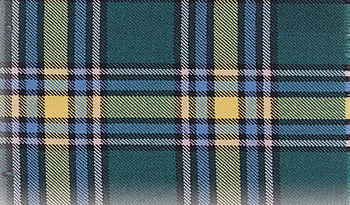
Alberta Tartan | canada.ca
- British Columbia: The design showcases the blue of the Pacific Ocean, green of the forests, red of the maple leaf, white of the dogwood floral emblem, and gold of the crown and sun in the provincial arms.
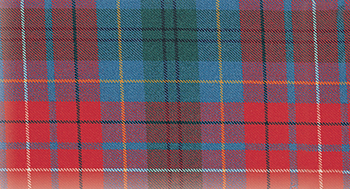
British Columbia Tartan | canada.ca
- Manitoba: The red squares symbolize the Red River Settlement; the green squares represent the province's natural resources; the azure blue squares depict Lord Selkirk, founder of the Red River Settlement; the verdant lines symbolize the diverse cultures and races enriching the province; and the golden lines depict the grain and other agricultural products of Manitoba.

Manitoba Tartan | canada.ca
- New Brunswick: The colours in the tartan's design symbolize different aspects of New Brunswick: forest green for lumbering; meadow green for agriculture; blue for coastal and inland waters; gold for potential wealth; and red for the devotion of the early Loyalist settlers and the Royal New Brunswick Regiment.
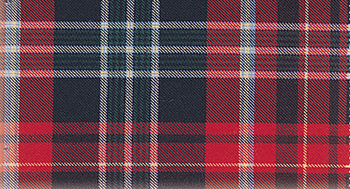
New Brunswick Tartan | canada.ca
- Newfoundland and Labrador: The tartan features gold, white, brown, and red on a green base. Gold symbolizes the sun's rays, green for pine-clad hills, white for snow, brown for the Iron Isle, and red for the Royal Standard of our forefathers.
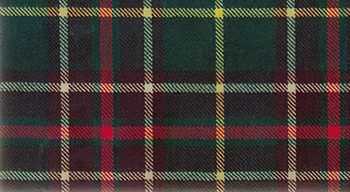
Newfoundland and Labrador Tartan | canada.ca
- Northwest Territories: Depicts various colours of the Northern region: snow-white, forest-green, birch-yellow in autumn, tundra-red, and lake, river, and ocean-blue.
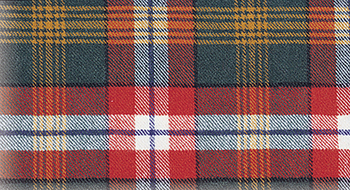
Northwest Territories Tartan | canada.ca
- Nova Scotia: The design features the blue of sea and sky; the dark and light greens of evergreens and deciduous trees typical of the province; the white of rocks and coastline surf; the gold of Nova Scotia's Royal Charter; and the red representing the lion rampant on the Nova Scotia crest.
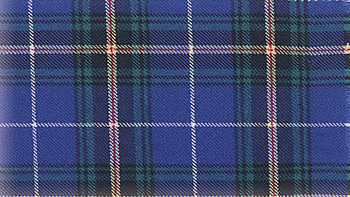
Nova Scotia Tartan | canada.ca
- Nunavut: Does not have a Tartan.
- Ontario: The Ontario tartan has four colour blocks: red, white, three greens, and two blues. Green symbolizes Ontario's forests and fields, blue for the waters, red for First Nations, and white for the sky.
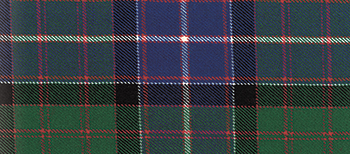
Ontario Tartan | canada.ca
- Prince Edward Island: The reddish-brown symbolizes soil redness; green is for grass and trees; white represents wave caps; yellow symbolizes the sun.

Prince Edward Island Tartan | canada.ca
- Quebec: The colours are derived from the provincial coat of arms shield's three horizontal sections: blue represents the upper division's field with three fleurs-de-lys; green reflects the sprig of maple leaves in the lower division; red corresponds to the central division's background; gold signifies both the lion rampant in the third division and the crest's crown; and white symbolizes the scroll bearing the motto “Je me souviens” (I remember).

Quebec Tartan | True North Clan
- Saskatchewan: Saskatchewan boasts two official tartans: the Saskatchewan District Tartan and the Saskatchewan Dress Tartan. The District Tartan features a two-block design with seven distinct shades—gold symbolizing prairie wheat, brown for summer fallow, green for forests, yellow for canola and sunflower, red for the western red lily, white for snow, and black for coal and oil. The Dress Tartan, a variation crafted for competitive highland dancers, adapts the original by transforming its off-white line into the background color, creating a striking contrast with the other hues.
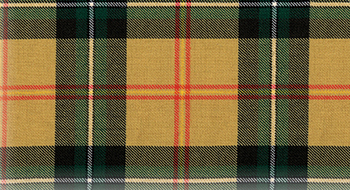
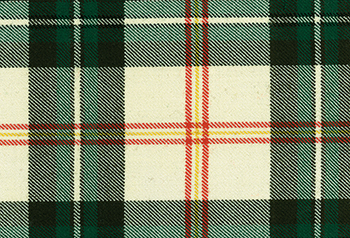
Saskatchewan Tartans | canada.ca
- Yukon: The blue reflects the shimmering, glacier-fed waters and pristine mountain skies; magenta mirrors the hue of the floral emblem; green captures the vast wilderness forests; purple evokes the grandeur of the mountains; white signifies the pristine winter snow; and yellow embodies the gentle, lingering evenings of the midnight sun as well as the territory’s renowned gold deposits.
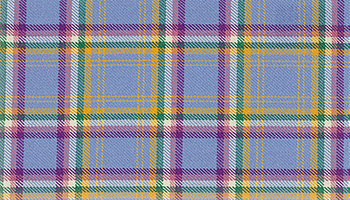
Yukon Tartan | canada.ca
These tartans not only celebrate Scottish heritage but also encapsulate the diverse landscapes and histories of Canada's regions.
Celebrating Canadian Heritage Through Apparel
Here at Canada is my Home, we celebrate Canada through apparel and accessories. Be sure to check out our unique designs and celebrate our beloved country every day! Check out our collections today!
Key Resources